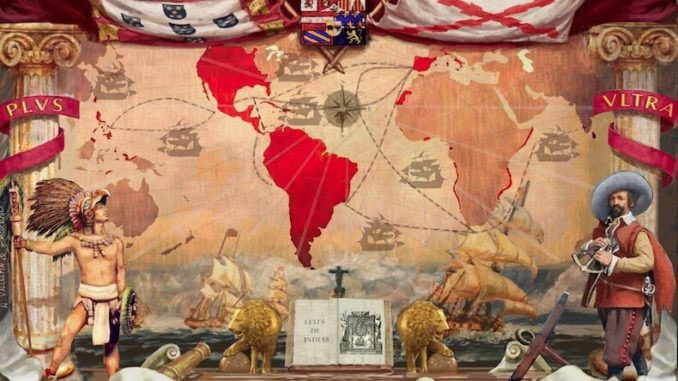by El Reportero News Services
Every October 12, we commemorate Hispanic Heritage Day or the Day of the Discovery of America, a milestone that marked the beginning of an unprecedented cultural exchange between the Old World and the New World. This crucial event in global history not only signaled Europe’s expansion into unknown lands but also laid the foundations for what we now know as the Hispanic-American world. This celebration holds particular significance for Latin America and the United States, regions that, despite sharing common cultural roots, have followed different historical and social trajectories.
The Meaning of October 12
On October 12, 1492, Christopher Columbus arrived at what we now know as the Americas, in an encounter between two worlds that would transform the history of both. This day marks the beginning of European colonization in the Americas, which brought with it a complex and multifaceted legacy, full of both light and shadows. On the one hand, European colonization led to the establishment of new cities, the exchange of technologies, and cultural intermingling. On the other hand, it also imposed a dominant culture on pre-existing indigenous societies, exploited their resources, and initiated a long history of conflicts and inequalities that persist to this day.
Hispanic Heritage in Latin America
In Latin America, October 12 is commemorated under various names and with diverse approaches. In countries like Mexico, Chile, and Argentina, the day is known as “Día de la Raza” (Day of the Race), highlighting the mix of cultures that emerged following the arrival of Europeans. It is a day for reflecting on the blending of races, customs, and beliefs that gave rise to the rich cultural diversity of Latin America. This celebration also seeks to acknowledge the indigenous and Afro-descendant heritage, which is an essential part of Latin American identity.
For many, this day is an opportunity to highlight the cultural, social, and economic achievements of Latin American countries, which have forged their own identity over the centuries. However, it is also a moment to remember the devastating effects of colonization, such as the loss of millions of indigenous lives and the imposition of power structures that still affect the region today.
Hispanic Heritage in the United States
In the United States, October 12 has traditionally been celebrated as Columbus Day. However, this commemoration has been the subject of controversy in recent years. While some view it as a celebration of the discovery of the New World and the beginning of European settlement in America, others see it as the start of the oppression and exploitation of indigenous peoples.
Due to this growing historical awareness, many U.S. states and cities have begun to replace Columbus Day with Indigenous Peoples’ Day, to honor the cultures and contributions of the native peoples who inhabited these lands long before the Europeans arrived. Despite these debates, the Hispanic legacy remains strong in the U.S., especially in states like California, Texas, and Florida, where the Latino presence has left an indelible cultural mark.
A bridge between two worlds
October 12 symbolizes a bridge between cultures, both in Latin America and the United States. Hispanic Heritage, in all its forms, serves as a reminder of the power of diversity and cultural exchange. In Latin America, the blending of cultures has created a vibrant region with a rich artistic, literary, and musical heritage. In the U.S., the growing Hispanic influence is reflected in all aspects of society, from politics to entertainment.
The commemoration of this day invites reflection on how the encounter between two worlds has shaped the Americas we know today. By recognizing both the positive and negative aspects of this legacy, we open the door to a future where cultures can coexist and enrich one another. Thus, October 12 is more than just a historical commemoration; it is a call to build a shared identity where diversity is celebrated, and the past serves as a lesson for a more inclusive future.



